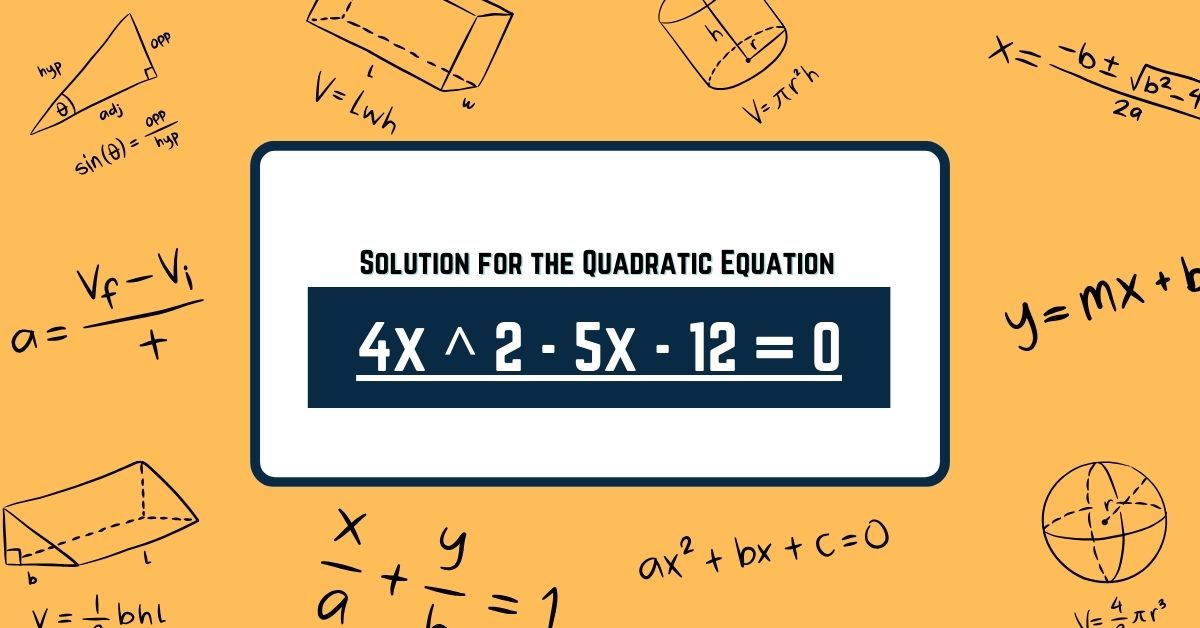Solving the quadratic equation x2-11x+28=0 can be approached through several mathematical strategies, each providing a unique lens through which to understand the solution. This article delves deeply into three methods: factoring, completing the square, and the quadratic formula, offering a comprehensive guide to tackling similar problems.
Introduction to Quadratic Equations x2-11x+28=0
A quadratic equation is a second-degree polynomial equation of Ax2+Bx+C=0, where A, B, and C are constants, and A is not equal to 0. The solutions to these equations, known as roots, can be real or complex numbers. The equation x2-11x+28=0 is a classic example, showcasing how different techniques can be applied to find its roots.
1. Factoring Method
Factoring is often the first method attempted when solving quadratic equations, as it can provide the quickest solution if the quadratic easily factors into a product of binomials.
Steps for Factoring:
- Identify the Coefficients: For the given equation, the coefficients are A=1 and C=28.
- Search for Factors: We seek two numbers whose product equals and the sum equals B. For our equation, these numbers must be multiplied by 28 and added to -11.
- Express in Factored Form: Once the numbers are found, we rewrite the quadratic equation as (x-p)(x-q)=0, where P and q are the roots.
For x2-11x+28=0, the numbers that satisfy the conditions are 7 and 4, leading to the factored form (x-p)(x-q)=0.
2. Completing the Square
This method transforms the quadratic equation into a perfect square trinomial, allowing us to solve for x by taking square roots. It’s beneficial when the equation does not factor easily.
Steps for Completing the Square:
- Rearrange the Equation: Ensure the equation is in the form Ax2+Bx=-C.
- Form a Perfect Square: Add the square of half the coefficient of x to both sides to create a perfect square on one side of the equation.
- Solve for x: Take the square root of both sides and solve the resulting linear equation.
For x2-11x+28=0, completing the square would involve adding and subtracting
to form a perfect square trinomial, then solve for x.
3. Quadratic Formula
The quadratic formula is a universal method that can solve any quadratic equation, providing a direct path to the roots without the need for factoring or completing the square.
The Formula:
Applying this formula to x2-11x+28=0, we substitute A=1, and C=28 to find the roots.
Calculation and Results
Using the quadratic formula for our specific equation, we calculated that the roots are x=7 and x=4. This confirms that the equation can be factored into (x-7)(x-4)=0, aligning with the solutions obtained through the factoring method.
Must Read:
- Kajal Contact App Se Paise Kaise Kamaye | Best App Paise Se Paise Kamaye
- Poem: Aalu Kachalu Beta Kahan Gaye The Lyrics
Comparative Analysis and Conclusion
Each of the methods discussed offers a distinct approach to solving quadratic equations:
- Factoring is most efficient when the quadratic easily decomposes into binomials, as seen with x2-11x+28=0.
- Completing the Square provides a systematic way to solve any quadratic equation, which is especially useful when the equation does not readily factor.
- Quadratic Formula is the most versatile and failsafe method, applicable to all quadratic equations, regardless of their complexity.
In practice, the choice of method is influenced by the nature of the equation and the solver’s preference or requirements of the context in which the problem is posed. For x2-11x+28=0, while all three methods lead to the same solutions ( and ), factoring offers the most straightforward path. Understanding and mastering these techniques equips learners with valuable tools for tackling various mathematical challenges.


